Mario Cavaglieri “Paesaggio a Peyloubère”

Mario Cavaglieri
“Paesaggio a Peyloubère”
Tempera su cartoncino
cm 50×60
1947
Difficilmente facciamo vedere il retro dei nostri quadri, quando lo facciamo è perché ci sono motivi particolarmente interessanti, come in questo caso.
Questo “Paesaggio a Peyloubère” di Mario Cavaglieri infatti porta i cartellini della Biennale di Venezia del 1948, la sua terza partecipazione alla rassegna.
Cavaglieri era tornato in Francia da appena un anno dopo la fine della guerra, dove perse il cognato ed altri componenti della famiglia, deportati ed uccisi nei campi di sterminio nazisti.
Questo quindi, come altri dipinti coevi, profumano un po’ di rinascita e rivalsa su quegli anni terribili.
La strada sterrata che curva dolcemente verso sinistra, costeggia la proprietà di una abitazione che appare da dietro la vegetazione del suo stesso giardino, per condurci dove molte persone partecipano alla vita mondana.
La pennellata e rapida e sapientemente disciplinata dal disegno sottostante che ne delimita i contorni.
Un dipinto che rende perfettamente quella precisa sensazione dello scorrere della vita nel piccolo centro francese e di quel vivace clima culturale.
Mario Cavaglieri
“Landscape at Peyloubère”
Tempera on cardboard
cm 50×60
1947
We rarely show the back of our paintings, when we do it is because there are particularly interesting reasons, as in this case.
In fact, this ‘Landscape at Peyloubère’ by Mario Cavaglieri bears the tags of the 1948 Venice Biennale, his third participation in the exhibition.
Cavaglieri had returned to France just a year after the end of the war, where he lost his brother-in-law and other family members who were deported and killed in Nazi death camps.
This therefore, like other contemporary paintings, smells a little of rebirth and revenge on those terrible years.
This painting, like others from the same period, exudes a sense of rebirth and redemption from those terrible years.
The dirt road curves gently to the left, running alongside a house that peeks out from behind the vegetation of its own garden, leading us to a place where many people participate in social life.
The brushstrokes are rapid and skilfully disciplined by the underlying drawing that defines the contours.
This painting perfectly captures the precise feeling of life in this small French town and its lively cultural atmosphere.

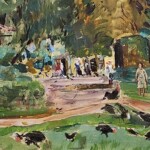
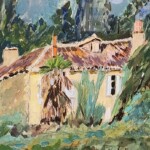
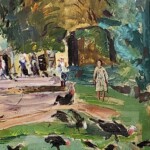
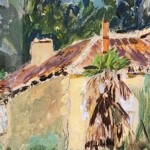
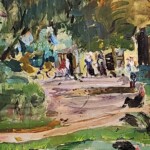
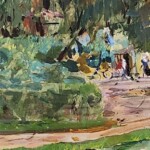
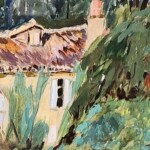
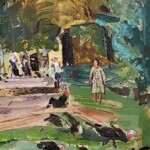
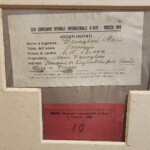
Commenti recenti